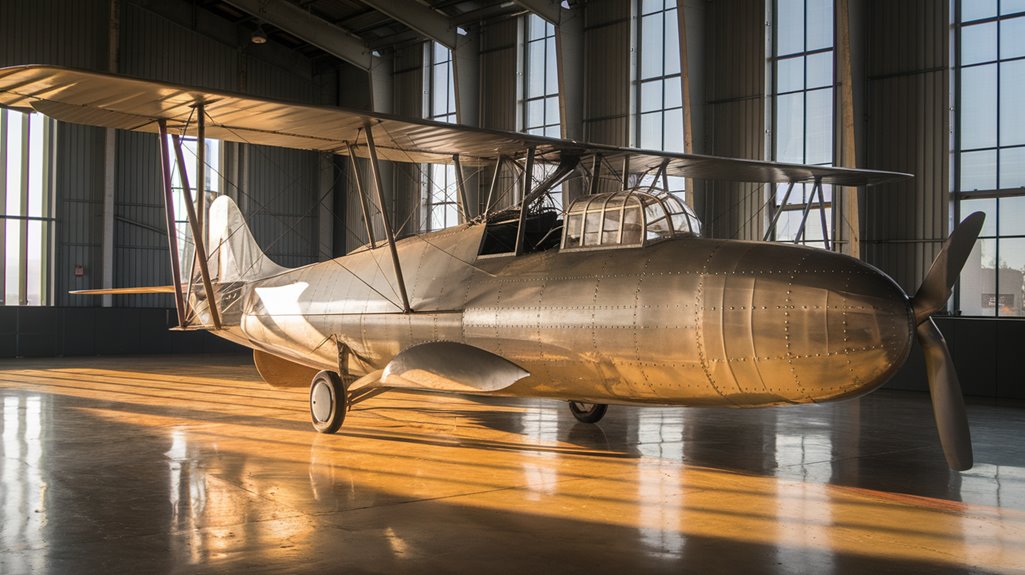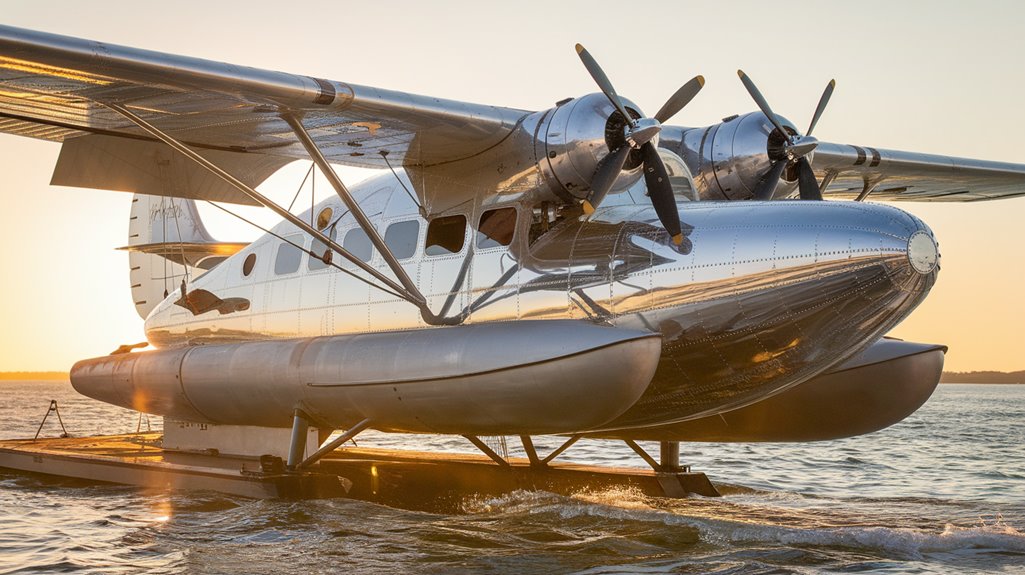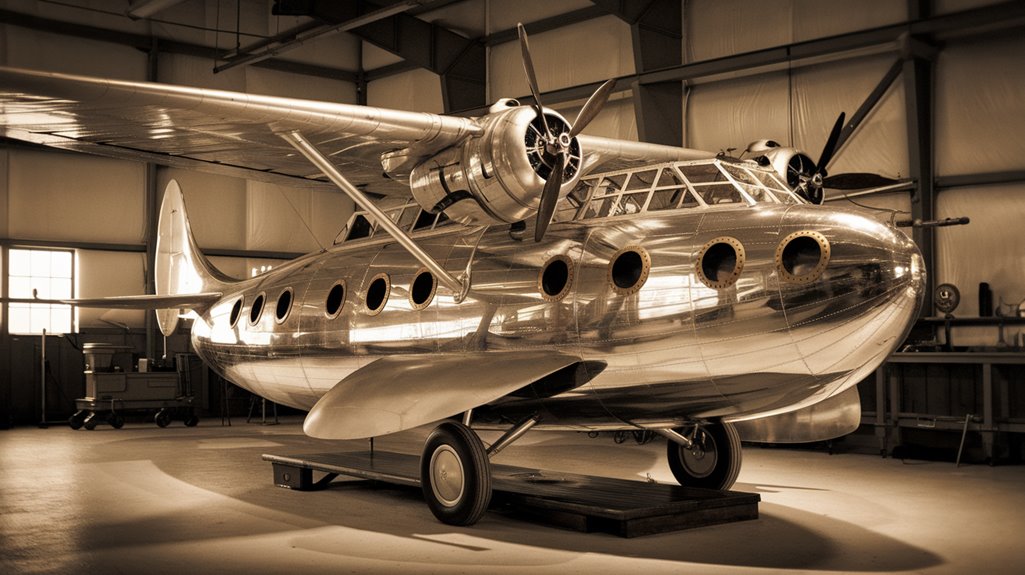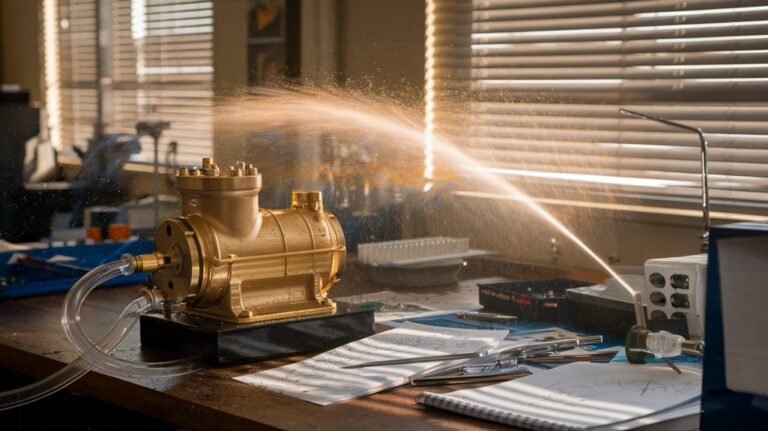They Dreamed of a Flying Submarine
You've probably imagined what it would be like to explore both sky and sea in a single vehicle. Engineers and military planners have chased this dream for over a century, attempting to create a machine that can seamlessly shift from ocean depths to open skies. While the concept might sound like science fiction, real prototypes have emerged throughout history, each bringing us closer to this ambitious goal. Let's discover how close we've come to making this seemingly impossible fusion a reality.
The Early Pioneers: From Britain to Soviet Dreams

While ancient civilizations experimented with underwater breathing techniques, the true pioneers of submarine technology emerged in 16th century Britain.
You'll find William Bourne's pioneering designs from 1578 marked a significant breakthrough, introducing hand-operated wooden screws to control buoyancy.
The historical significance of these early innovations became clear when Cornelius Drebbel built the first working submarine in 1620, demonstrating it before King James I in the Thames. Bishop John Wilkins recognized submarines could provide safety from military threats and strategic advantages in warfare.
By 1747, Nathaniel Symons revolutionized submarine design with the first patented ballast tank system.
Robert Fulton's "Nautilus" in 1800 brought submarine development into the modern era with its distinctive cigar-shaped hull and copper conning tower.
Even the Russians joined the race, with Yefim Nikonov designing military submarines between 1718 and 1728. These early efforts eventually led to remarkable achievements like the Soviet K-222, which reached unprecedented underwater speeds of over 40 mph.
Technical Hurdles That Kept Flying Subs Grounded
From the early dreams of underwater pioneers to modern engineering challenges, the concept of a flying submarine faces major technical obstacles.
You'll find that design feasibility remains elusive due to conflicting requirements: aircraft need lightweight structures, while submarines demand heavy, pressure-resistant hulls.
Propulsion innovation presents another significant hurdle. A 2010 Navy study confirmed these vehicles were technically possible using existing technology, though significant engineering work remains.
You can't simply use jet engines underwater, and conventional submarine propulsion systems won't work in the air. While engineers have proposed solutions like snorkel systems and dual-role engines, these concepts haven't yet proven practical.
Recent developments from DARPA's research in 2003 explored potential solutions for these technical challenges.
The materials needed must perform an impossible balancing act – being both light enough for flight and strong enough to withstand deep-water pressure.
When you consider these fundamental challenges, along with complex operational requirements, it's clear why flying submarines remain in the domain of science fiction.
Notable Prototypes Through the Decades
Throughout the decades, several ambitious engineers and organizations have attempted to turn the flying submarine dream into reality. Early innovations began with Soviet engineer Boris Ushakov's 1937 manta ray-inspired design, which tackled engineering challenges through retractable metal plates and floodable wings. The design incorporated six pressurized compartments to maintain structural integrity during transitions between air and water. The crew operating these vessels needed to retreat to safety when submerging underwater.
You'll find the most significant breakthrough in Donald Reid's RFS-1 from 1961. Built from salvaged aircraft parts, it completed history's first flying submarine cycle in 1964, though it could only manage short, low-altitude hops.
The U.S. military saw potential, leading to Convair's ambitious 1962 proposal and Lockheed Martin's 2006 Cormorant project. While most attempts faced insurmountable technical hurdles, they've contributed valuable insights to the field, culminating in advanced concepts like the 2008 Carderock Flying Sub designed for special operations.
DARPA and Modern Military Developments
As DARPA spearheads modern flying submarine research, you'll find their efforts focused on overcoming traditional limitations through cutting-edge materials and systems.
With a $2.9B budget and collaborations across universities and defense labs, they're developing lightweight carbon fiber composites that can handle both aerial and underwater stresses. Similar to how John Holland's designs revolutionized submarine development, DARPA aims to create transformative underwater-aerial vessels.
You'll see their investments extending into drone technology and hybrid propulsion systems, aiming to create versatile craft that can seamlessly shift between environments.
By leveraging advanced algorithms and new electronic platforms for sensing and imaging, they're tackling the complex challenges of electromagnetic dominance and navigation. Through their ongoing work in trustworthy AI development, they're ensuring autonomous systems can reliably operate in critical situations.
DARPA's commitment to rapid development cycles guarantees they're not just dreaming about flying submarines – they're actively working to make them a reality while outpacing potential adversaries.
The Future Potential of Submarine-Aircraft Hybrids

The future of submarine-aircraft hybrids extends far beyond DARPA's current research initiatives.
As hybrid technology continues to evolve, you'll see these versatile platforms revolutionizing future warfare through enhanced surveillance capabilities and stealthier operations.
You can expect these vessels to dramatically expand submarine awareness.
With the ability to launch aircraft that can ascend to 35,000 feet and travel 500 miles, submarines will no longer be limited by their inherent blindness underwater.
The technology's dual-domain capabilities also offer unprecedented flexibility for special operations, allowing teams to deploy from hidden underwater positions and strike with minimal detection.
Recent innovations include complex control mechanisms that enable the vessels to glide on waves before taking off, solving earlier stability challenges during the launch process.
While earlier attempts like the Cormorant faced challenges, recent Chinese prototypes and U.S. Navy studies confirm that these ambitious designs are now technically feasible using current materials and engineering solutions.
 Sen-Toku submarine class that carried multiple aircraft during World War II.
Sen-Toku submarine class that carried multiple aircraft during World War II.










